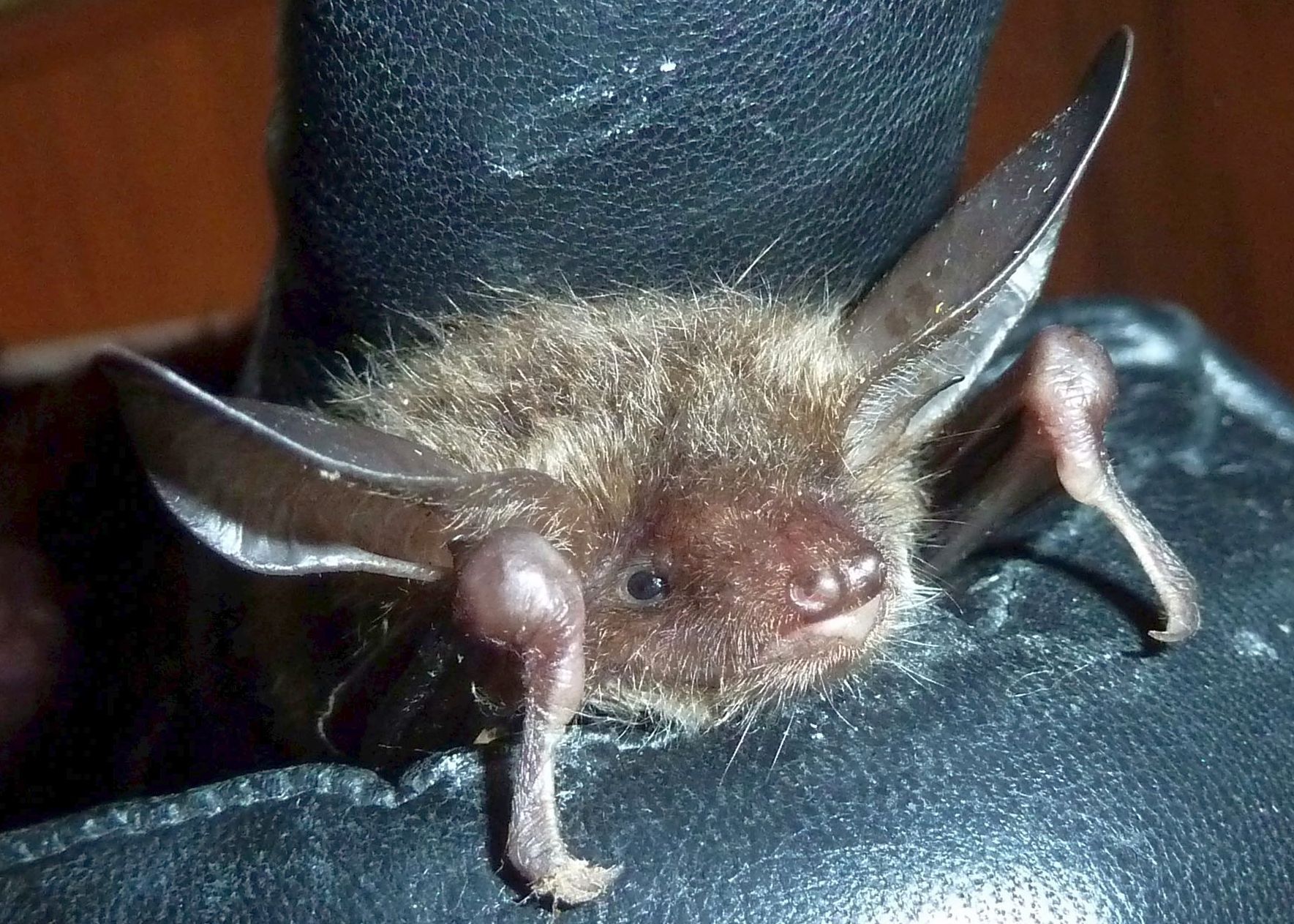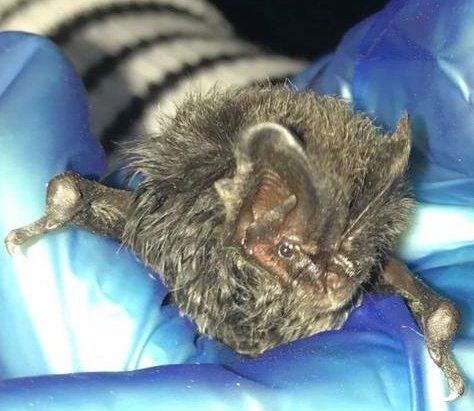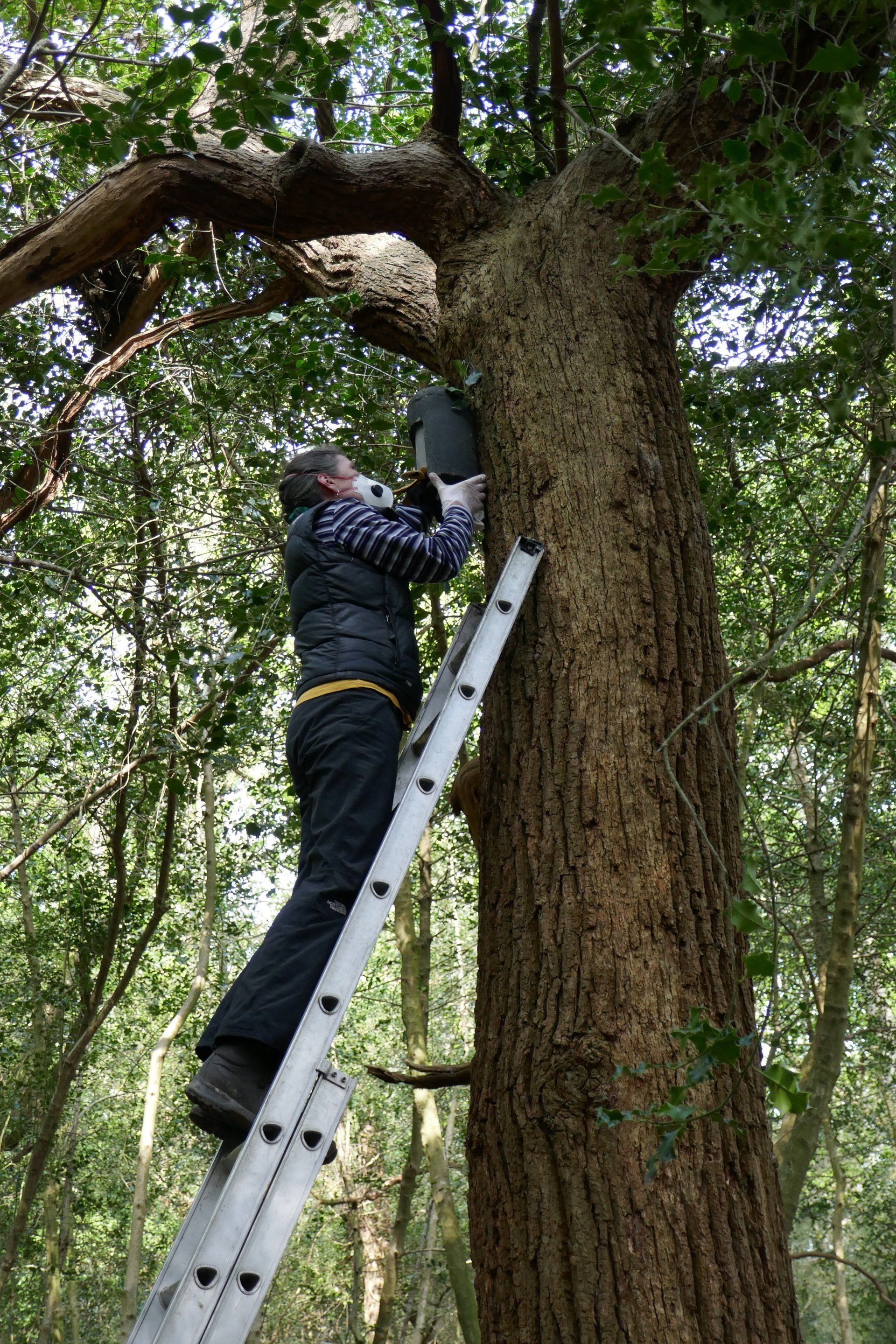Projects in Hampshire
The Hampshire Bat Group runs a number of long-term projects, some for beginners to bat conservation work and others requiring some training. To find out more, contact the leader of each project or come along to the next members' event.
Fill the Gaps!
Co-ordinated by Nik Knight
The objective of this project is to increase our knowledge of bats in Hampshire by looking for places on our species distribution maps where there are no previous records. This project, which is open to all our members and supporters, starts by choosing a general area of interest, perhaps near your home. Then check with Nik Knight, our County Recorder, to find out what has already been recorded and find out what unexplored areas need to be investigated. In some cases, members have used our static bat detectors to carry out long-term studies.
Post Release Survival Project
Led by Claire Andrews
This project monitors bats that have been in care and then ringed and released, in order to gather long-term data on their survival. Running from 2024, the research project spans five years. Each summer, Claire takes care of many of the bats from our rehabilitators in her flight cage. This project is linked in with our North Hampshire Bat Box Project and the twice yearly bat box inspections.
Hibernation Counts
Led by Jim Park
During the winter bat group members are active undertaking regular surveys of hibernation sites such as disused railway tunnels, old pill boxes, historic buildings and ruins and many fortifications along our coast, plus a purpose built bat cave near Eastleigh! Numbers are limited to reduce disturbance as many of these sites are sensitive, however opportunities are available for new people training for a licence or just wanting relevant experience.
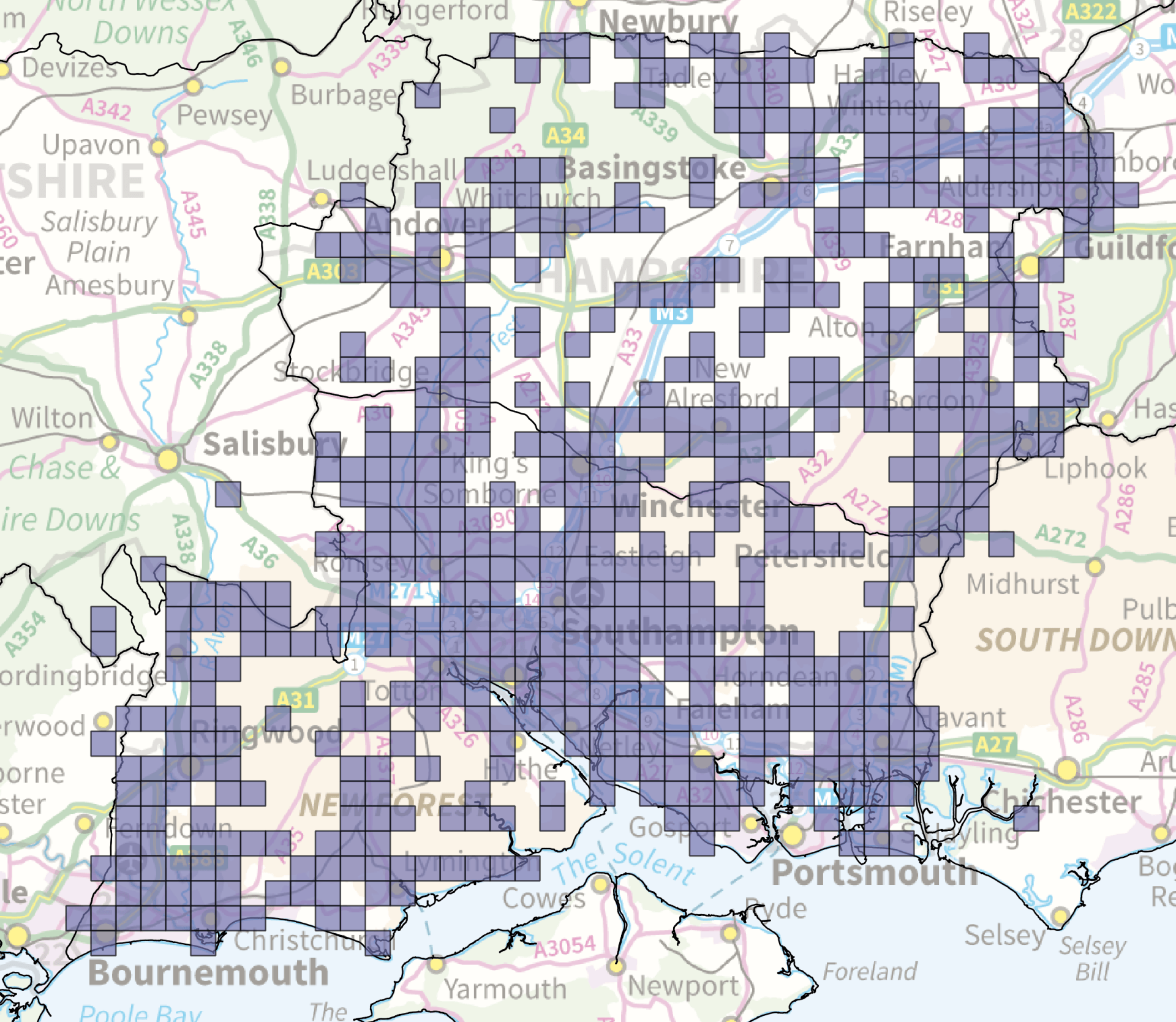
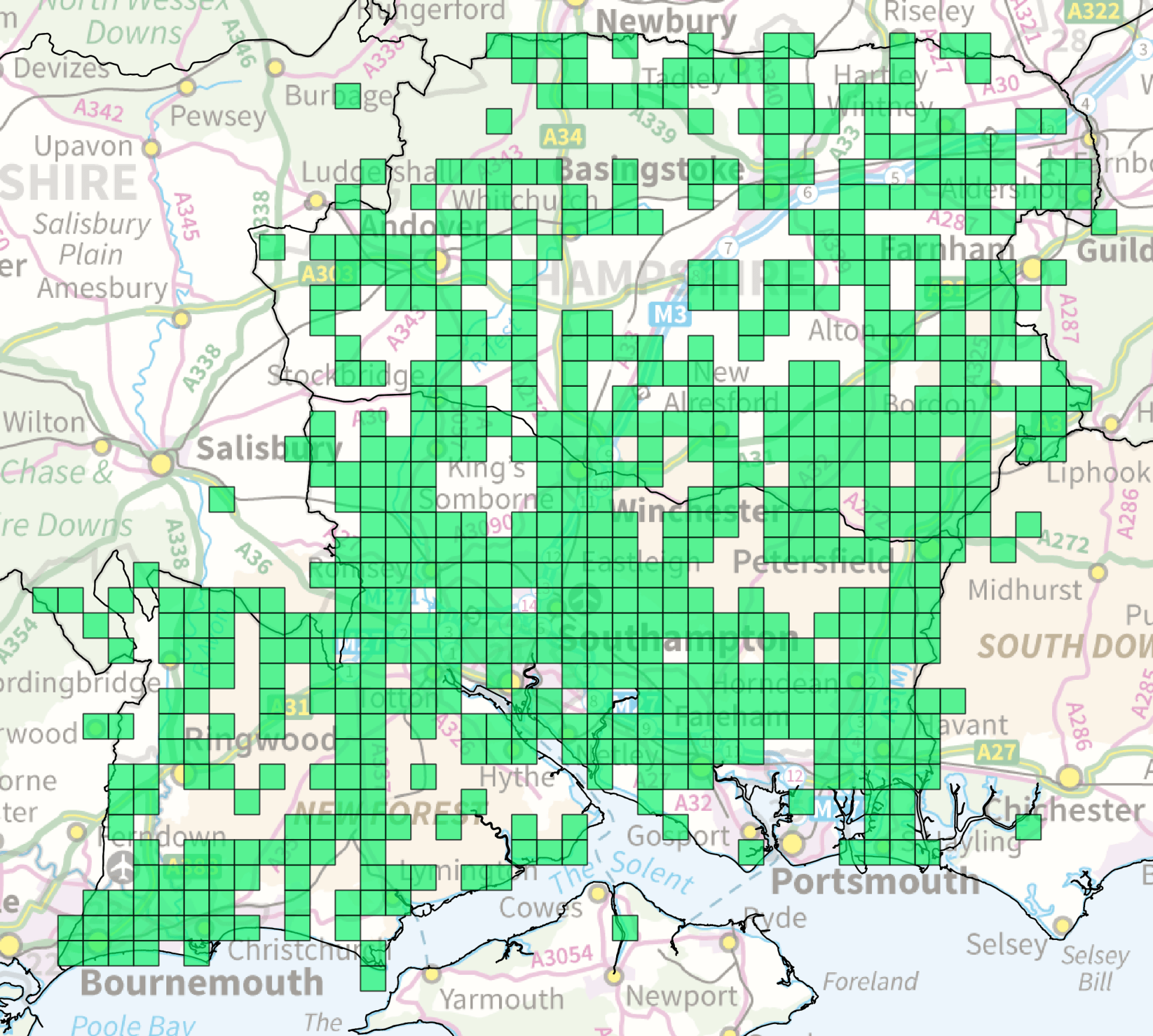
North Hampshire Bat Box Project
Led by Kristina Wood
Shortage of roosting sites can limit the number of bats that can live in otherwise suitable areas. This project aims to remedy that by siting large numbers of woodcrete bat boxes on farms and estates throughout the northern part of the county. In addition to providing roost sites, we aim to help and encourage landowners to conserve bats and other wildlife. In the process, we hope to raise public awareness of bats and the natural environment. Monitoring the boxes will give us information about the bat species present in those areas.
Our method is simple: bat boxes are placed on carefully selected trees in suitable habitat and thereafter periodically maintained and checked for bat usage. The landowners simply commit to helping their local bat populations.
Hampshire Bat Group members can become involved in the initial surveying, erecting the bat boxes and, under the supervision of our qualified licence holders, helping with the annual occupancy and maintenance checking. Help is also required to find funding, including from individuals, private companies and public bodies. A modest investment can make a real difference to bat conservation. If you are interested in learning more about the project and how you can help conserve Hampshire's bats, please contact Graeme Sheppard: gsheppardhantsbats(at)gmail.com.
This project started in 2020 in the north east of the county and is now increasing the area covered.
We are most grateful for a generous grant from the North Wessex Downs Landscape Trust towards bat boxes within the North Wessex Downs Area of Outstanding Natural Beauty. Matched by funds from our own data search service, we were able to start erecting the first batch of boxes during 2021. This project has been supported through the North Wessex Downs Sustainable Development Fund. A further generous donation has been made by the Stannah company for bat boxes in the Andover area. A third most welcome source of funding has been two large grants from the Watercress and Winterbournes Landscape Partnership Scheme, made possible by the National Lottery Heritage Fund. Throughout the project we have received generous support and encouragement from the local authorites, particularly Basingstoke and Dean Borough Council and Test Valley Borough Council.
Small Myotis capture surveys
Co-ordinated by Kelly Jones and Ani Binet
In February 2016, Daniel Whitby gave us a presentation about his research into small Myotis bats (the very similar Brandt's, whiskered and alcathoe species), including his discovery of the hitherto unknown alcathoe bat (Myotis alcathoe) in Sussex in 2010. We were inspired to assist him to assess the distribution of these three species in Hampshire.
Initially a small team of experienced members was set up to train in the necessary advanced bat capture techniques. Simultaneously we scouted out possible sites in south east Hampshire. Funding had to be raised to buy harp traps and acoustic lures. We conducted pilot surveys in 2016 and 2017, but the first records of alcathoe bats in Hampshire came from Daniel Whitby's own professional surveys and from a bat that was taken into care. We were able to arrange a series of survey nights in 2018 and 2019, visiting sites near Fleet, Winchester, Chawton and Rowlands Castle. A very good range of species was found, including at sites where we held no previous bat records at all. The identification of all the small Myotis bats was checked thoroughly, including by DNA analysis of their droppings.
Throughout we have been in partnership with the small Myotis survey teams in adjacent counties. The Surrey Bat Group team discovered alcathoe bats in Hampshire before we did, while our team's first alcathoe captures were just over the border in West Sussex!
New Forest Rare Species Project
Led by Colleen Hope
Bechstein’s bat Myotis bechsteinii and barbastelle bat Barbastella barbastellus are two of the rarest bats in Europe. Only a handful of breeding sites for either species are known in the UK. In 2006 Hampshire Bat Group established a project to investigate their distribution in the New Forest. A handful of injured bats had been found in the preceding 20 years but little more was known about the status of the two species.
Funding was obtained from the New Forest Sustainable Development Fund and New Forest Trust to buy equipment for the surveys with all labour provided by volunteers. These have been a combination of detector transects and capture/ radio tracking surveys. Since 2006 four Bechstein’s and three barbastelle maternity colonies have been found across the Forest. Work is on-going and further money was granted to establish bat box survey sites in four areas where we suspect either one or both species are present and breeding. Now we have 96 bat boxes, spread across six sites, which we aim to maintain and check for bat occupancy twice each year. Over the winter of 2023/4, we repositioned some of the boxes to new sites and added a few additional boxes.
The grey long-eared bat Plecotus austriacus is another very rare species, confined in the UK to the south with a stronghold on the Isle of Wight and a handful of records along the south coast. It has been recorded in the New Forest and it is hoped that we may encounter it through our surveys of the area. A few additional sites are being targeted where suitable habitat for the species is known. The National Park has also provided funding for DNA analysis of long-eared bat droppings found by bat group members in the New Forest.
In recent years this project has been broadened to investigate other under-studied areas of Hampshire. A metapopulation of Bechstein’s is known in the southeast of the county and a breeding colony of barbastelle bats at Mottisfont near Romsey. Both species have been captured at Greywell Tunnel during swarming surveys as well as at two other locations during HBG capture surveys. Barbastelle bats have been recorded on bat detectors throughout the county although as yet there are no further confirmed breeding sites. There are also likely to be other breeding colonies of Bechstein’s bats in the county and HBG surveys of other sites are on-going.
A further extension to the project is the monitoring of the greater horseshoe bat population in the lower Avon Valley. During 2025 we have conducted emergence counts, radio tracking and static detector surveys, in conjunction with the Avon Valley Farm Cluster.
Greywell Tunnel
Led by Dr Paul Hope
Hibernation and swarming surveys are conducted regularly at this important site.
Church surveys
Led by Vicki Russell
Since the very early years of the Hampshire Bat Group, we have conducted surveys of bats in churches and have kept records. When opportunities arise we like to add to this and liaise with parish communities.
National Projects
National Bat Monitoring Project
Hampshire Bat Group NBMP 'Champion' - Nik Knight
Surveyors are always needed to support the Bat Conservation Trust's National Bat Monitoring Project (NBMP). Our members include enthusiastic participants in these surveys over many years. The component projects include monitoring Daubenton's bats on rivers (the Waterways Survey); assessing noctules, serotines and pipistrelle species on walking transects (the Field Survey); counting out bats that make their maternity roosts in buildings (the Roost Count); and surveying ancient woodland for barbastelle bats (the Woodland Survey). For more information visit the Surveys section of BCT's website. Many of the NBMP surveys tie in well with our local surveys and information can be shared. Hampshire Bat Group can help you by providing training or information on householders willing to allow people to count out their bats and possibly we can help by loaning with relevant equipment. Please ensure that any data you collect is given to the Hampshire Bat Group as well as BCT each year!






